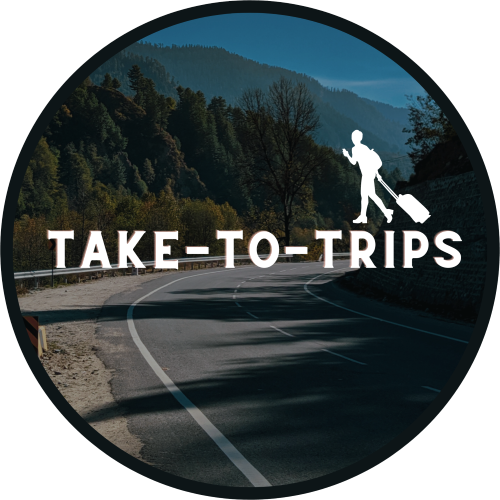Nag Tibba
The highest peak in the lesser Himalayas (1N/2D)
Starting From Rs 5,499
Short Description
Nag Tibba Short Description
Available Batches
Permits
Travel
Guide
Meals
Stay
Note:- Mask, Sanitizer & Gloves are mandatory for all travelers.
Dificulty – Easy
Duration – 2D/1N
Maximum Altitude – 9,915 feet
Starting point – Pantwari
Itinerary:
Delhi to Dehradun – 254 km 6 hours drive.
Dehradun to Pantwari – 90 km drive and 4.5 km trek to the campsite
- Early morning drive to Pantwari from Dehradun which is 90 km away, you will be crossing Mussoorie.
- The road descends after Mussoorie, towards the Yamuna river bed and reaches the town of Nainbag.
- There are two roads, one towards Yamunotri and the other narrow uphill road which leads to Pantwari village. This takes us behind the Mussoorie ridge into shepherd territory.
- Terraced farms and hill slopes dotted with Bauhinia trees with their purple blossoms(November to March) are a sight to photograph. These flowering trees are easily identified by their leaves which are in the shape of a camels’ foot.
- Start your trek from Pantwari village for the campsite which is the base for Nag Tibba summit.
- Enjoy your cup of tea while sitting in the campsite and relish the beautiful views around. Eat your dinner you might get some good shots if you are an astrophotographer.
- Overnight Stay at the campsite.
Trek from campsite to Nag Tibba top and back to Pantwari – Drive back to Dehradun.
- Wake up early morning to enjoy the beautiful morning and if you are lucky you can spot some beautiful birds around the campsite.
- Post-breakfast, trek starts for the Nag Devta temple. There is a vast open space near the temple which is often used as a grazing ground for sheep and goats. The gradient increases for Nag Tibba summit.
- The forests turns dense and are dominated by oaks and rhododendrons. This is an ideal habitat for a variety of orchids (locally called kachina) to grow. However, with the pressure of grazing, lopping of oaks and trekking; this region is under anthropogenic pressure.
- A variety of birds like the Black Partridge, Hill Partridge, Himalayan Greenfinch, Rufous-gorgeted Flycatcher, whiskered Yuhina, Black Bulbul, Common Stonechat, Blue-throated Barbet, White-collared Blackbird, Niltava and flame back woodpecker can be seen in the forest. Start descending back to your campsite and after lunch head down to Pantwari village. You then start your journey back to Dehradun.
- You will be leaving for Delhi at night from Dehradun.
You will reach Delhi early morning.
Inclusions:
- Meals from Day 1 lunch to Day 2 lunch. Hot and delicious food will be served at Breakfast and Dinner. During trek packed food will be provided.
- Forest Permits/Camping Charges, if any (Up to the amount charged for Indian nationals)
- Tented accommodation throughout the trek.
- Rent for camping equipment.
Exclusions:
- 5% GST is extra
- Meals during road journeys
- Accommodation in Dehradun.
- Any expense not specified in the inclusion list
ATM points and connectivity:
- The place is at a remote location. Therefore, it is advised to carry some amount with yourself to avoid any hiccups during the whole journey. You can take out your cash from Mussoorie.
- The roads are pretty well maintained and connected from all sides.
Description
The Parvati Valley is one of the most picturesque places in the Himalayan region of Himachal Pradesh. Two days is all you need to explore its magnificent landscape and get refreshed from within. The Kasol to Kheerganga trek is an invigorating journey, which not only unveils the stunning terrain of the Himalayas, but also gives you a chance to learn about the interesting culture of the people living here. You will visit plenty of villages, and there will be infinite opportunities for you to click pictures with the snow-capped peaks in the background.
We begin this Kheerganga trek from Barshaini, which is around 45 minute away from Kasol, by road. From here, you will be taken to the hamlet of Barshaini to begin the on-foot journey. The 12-km trail from here provides you with ample opportunities to explore the natural bounties of the region. On the way, you will find numerous charming waterfalls that will convince you with their allure to take a picture. One sight of the astonishing serpent-shaped waterfall of Rudra Nag will give you a new perspective on nature. These splendid waterfalls are among the highlights of the Kheerganga trek.
All your tiredness of the hike will be washed away with a sight of the mystical hot springs of Kheerganga. You can step in it to tackle the cool weather. The one-of-a-kind experience of relaxing in a hot spring while admiring vistas of snow-capped peaks will remain with you forever as memories. The vistas from an altitude of about 13000 feet will also leave you spellbound. You get to spend the night here amidst the mighty snow-laden mountains. The second-day journey back to Kasol gives you another chance to admire what you might have missed on the first day while trekking from Kasol to Kheerganga. The trek is graded easy; therefore, almost anybody can undertake it with a little bit of preparation.
Image Gallery
FAQ
Kheerganga Trek is such a popular one because it is accessible most of the year. The best time for the trek is between April to November, but the absolute best months are April-May and September-October, because the weather is very pleasant in these months. Trekking during the monsoon season should be avoided, as the path can become very slippery and muddy.
As it is in the hills, network connectivity may be a problem. BSNL network works best, alongwith Airtel at some places. Take any important calls before starting to Kheerganga just in case.
The trek starts from Barshaini, and the total trek distance is 12-13 km and it takes around 7-8 hours to reach the topmost point of Kheerganga. The hot springs, located at a height of 2,950m, will entice you to take a dip in the hot water after the gruelling trek.
Enroute to Kheerganga you will find 5-6 stalls where you will mostly find Maggi and tea being served. However, we also suggest you to carry protein bars, biscuits, apples, etc. as sometimes these stalls are out of stock, so to avoid hunger carry some food along with you. You don’t have to worry about water, as the massive waterfalls have really fresh water to fill up in your bottles.
A good pair of water-resistant trekking boots that will provide you comfort, grip and speed will be best for the trek. Make sure to break in your boots before starting out to prevent foot sores.


